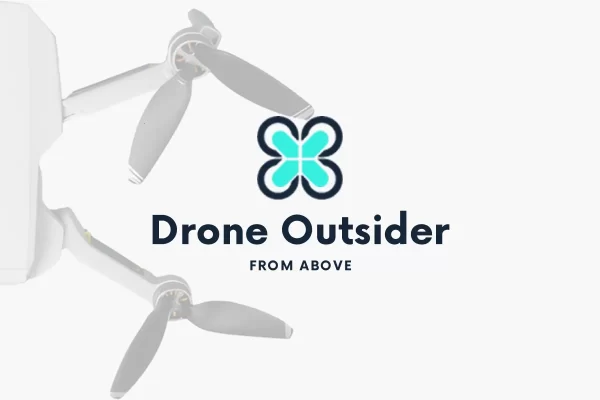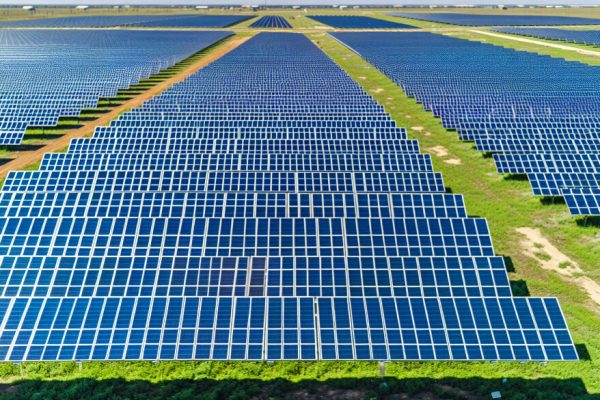Imagine a world where construction projects are completed faster, more accurately, and with enhanced safety. Now, stop imagining, because it’s already here—thanks to the use of drones! As unmanned aerial vehicles (UAVs) continue to revolutionize various sectors, their impact on construction is nothing short of astonishing. This post will explore the benefits of using drones for construction, including improved site analysis, progress monitoring, enhanced safety, and captivating marketing materials.
The Role of Drones in the Construction Industry

One of the most significant benefits of using drones in construction is their ability to conduct accurate and efficient site analysis and surveying. Drones offer the following benefits:
- Capture high-resolution images and data, offering a detailed view of construction sites
- Help project managers make informed decisions, thus streamlining the construction process
- Enable real-time tracking of projects and identifying potential delays or issues
These capabilities significantly contribute to project progress monitoring and improve overall efficiency in construction projects.
Moreover, drones enhance safety on construction sites by conducting inspections in hard-to-reach or dangerous areas and monitoring for potential hazards. And let’s not forget the stunning marketing and promotional materials drones can produce, showcasing a construction company’s work and generating new leads.
Enhanced Site Analysis and Surveying with Drones
Drones offer a level of accuracy and efficiency in site analysis and surveying that traditional methods simply can’t match. Drones provide the following benefits for construction teams:
- Capture high-quality images of building materials and construction sites
- Supply valuable data that simplifies site analysis and surveying
- Enable consistent flight and high-quality images through automated drone flights
These benefits are crucial for construction companies to gather accurate data and improve the efficiency of their construction projects.
Drones also drastically reduce the time and costs associated with traditional surveying methods, making them ideal for large-scale construction projects. With the help of AeroPoints, drones can provide on-the-ground reference points for high-accuracy data capture, without the hassle of manually marking and moving points as work progresses.
Real-Time Progress Monitoring with Drones
Drones also excel at monitoring the progress of construction projects in real-time. Drones capture images and data that can be input into Building Information Modeling (BIM) software. This process helps reveal discrepancies between the design and actual construction, aiding in identifying potential delays or issues. This not only helps keep projects on schedule but also ensures that the final product is built to exact specifications.
In addition to monitoring progress, drones can be used to:
- Send visual reports to clients, keeping them informed about how their project is progressing in terms of time and budget.
- Provide real-time tracking using drone data, allowing project managers to check all areas of a site for progress and alignment, improving project management and reducing costly errors.
- Offer up-to-date site views with centimeter-level resolution, which can help in many ways, such as accurately monitoring security fences and the location of equipment to reduce the risk of theft and loss.
Improving Safety on Construction Sites with Drones
Construction sites are notorious for their potential hazards, but drones are here to help enhance safety like never before. Drones conduct inspections in hard-to-reach or dangerous areas, ensuring worker safety while providing valuable data to project managers and construction teams. Drones come equipped with a variety of imaging capabilities, including thermal cameras, which can be used to spot building defects not visible to the naked eye, such as thermal bridging, water leaks, and defective insulation.
The advantages of using drones for safety management in construction are truly remarkable. Drones can:
- Efficiently monitor teams without incurring high operational costs
- Ensure that workers are following safety protocols and minimizing the risk of accidents
- Conduct safety inspections even after rain, when manual inspections would be dangerous due to slick and slippery surfaces
Marketing and Promoting Construction Projects with Drones
In today’s competitive construction industry, marketing and promotional materials are more important than ever. Drones can capture breathtaking aerial footage and photographs of construction sites, which can be used for marketing and promotional purposes. This footage showcases the progress and scale of a project, attracting potential clients and investors.
Drone marketing photography and videography can enhance advertising campaigns, providing unique and captivating content that sets a construction company apart from its competitors. Drones also enable the creation of dynamic videos and photographs of business locations, highlighting their features and amenities, which can enthrall consumers.
Overall, drones provide a visually appealing and innovative way to market and promote construction projects, making them an invaluable tool in the construction industry.
Types of Drones for Construction Projects

Given the plethora of drone applications in construction, choosing the appropriate drone for the task is crucial. It is important to pick a drone based on the task it needs to achieve for the construction company. Each task necessitates its own type of drone to achieve the desired result. In construction, there are three main types of drones used: multirotor drones, fixed-wing drones, and hybrid drones (VTOL). Each type has its own advantages and disadvantages.
Understanding each drone’s capabilities allows construction professionals to make informed decisions when selecting the most suitable drone for their needs. Whether it’s a small-scale inspection or a large infrastructure project, the right drone can make all the difference in the world, ensuring efficient and accurate data collection and analysis.
Multirotor Drones: Versatile and Stable
Multirotor drones are a popular choice for construction projects that require more horizontal movements, like road building projects. These drones have a central body and multiple rotors, providing amazing stability and ease of use. Multirotor drones are ideal for inspections and smaller areas, where their maneuverability and ability to hover in place make them incredibly versatile.
However, multirotor drones do have their limitations. They typically have a shorter flight time, lower speed, and smaller load capacity compared to fixed-wing drones. This makes them less suitable for large-scale sites and projects with high accuracy requirements.
Despite these limitations, multirotor drones still offer a range of benefits for construction professionals, especially when it comes to site analysis and inspections.
Fixed-Wing Drones: Ideal for Large-Scale Projects
Fixed-wing drones are designed for larger construction projects that require coverage of vast areas in a short amount of time. These drones are more stable and can fly faster than multirotor drones, making them ideal for mapping large areas of land. Fixed-wing drones provide an incredible view of large areas. With just one flight they are able to capture a lot of ground with accuracy and precision..
Despite their advantages, fixed-wing drones do have some drawbacks. They require a long runway for takeoff and landing, which may not be convenient around construction sites. Additionally, they can be more challenging to operate and often require specialized flight training.
Nonetheless, fixed-wing drones are a valuable tool for construction professionals working on large-scale projects, offering longer flight times and stability.
Hybrid Drones (VTOL): Combining Speed and Agility
Hybrid drones, also known as VTOL (Vertical Takeoff and Landing) drones, combine the best of both worlds: the stability and speed of fixed-wing drones and the maneuverability of multirotor drones. These drones are designed to take off and land vertically, like a multirotor drone, but also have the ability to transition into forward flight, like a fixed-wing drone.
Hybrid drones offer unprecedented efficiency and unmatched versatility in various construction scenarios, making them a popular choice for construction professionals. However, they can be more expensive and may require more intensive flight training compared to other drone types.
Despite these drawbacks, hybrid drones are an exciting and innovative option for construction projects that require both vertical takeoff and landing capabilities and long-range flight.
Key Considerations for Selecting Construction Drones

After reviewing the various types of drones and their construction applications, it’s now important to examine the key features when selecting a drone for your project. Some of the most important factors to consider include durability and ruggedness, ease of use and training, and data accuracy and resolution. By taking these features into account, construction professionals can ensure they select a drone that meets their specific needs and requirements.
Durability and Ruggedness: Withstanding Harsh Environments
Drones used in construction projects should be built to withstand the harsh environments and weather conditions commonly found on construction sites. A durable and rugged construction drone guarantees that it can continue to operate effectively and reliably, reducing the risk of damage or downtime during construction projects.
When selecting a construction drone, look for drones that have:
- Durable materials such as carbon fiber and Kevlar
- Shock-absorbing landing gear
- Waterproofing features
- Sensors and software that allow them to detect and avoid obstacles
- The ability to automatically adjust their flight path to avoid hazardous conditions
These features will ensure that you have a reliable and efficient drone for your construction projects.
A durable and rugged construction drone is an investment that can save time and money in the long run.
Ease of Use and Training: Simplifying Drone Adoption
As drones are still a relatively new technology in the construction industry, ease of use and training are essential for quick adoption and efficient operation. A construction drone that is simple to use and operate can significantly reduce the learning curve and the risk of accidents or errors during operation. Training ensures operators have the necessary skills to operate the drone safely and effectively, improving data quality and minimizing accidents.
When choosing a construction drone, consider intuitive and user-friendly systems that make it easy for operators to learn and master the controls quickly. In addition, look for drones that come with comprehensive training resources and support, ensuring your team has access to the information and guidance they need to use the drone effectively and safely.
Data Accuracy and Resolution: Ensuring Reliable Insights
High data accuracy and resolution are crucial for providing reliable and detailed information for construction planning and decision-making. The accuracy of the data collected by a drone will directly impact the success of the construction project, making it essential to choose a drone that can capture high-resolution images and provide precise measurements.
When selecting a construction drone, consider its imaging capabilities and the quality of the data it can produce. Look for drones equipped with high-resolution cameras and sensors, as well as advanced software that can process and analyze the data efficiently.
By ensuring your construction drone provides accurate and high-resolution data, you can confidently make informed decisions and optimize your construction project’s success.
Successful Drone Implementation in Construction Projects

To demonstrate the transformative impact of drones in the construction industry, we’ll review a few real-world case studies of successful drone usage in construction projects. These examples demonstrate the potential of drones to revolutionize the way construction professionals approach their work, from site analysis and planning to progress monitoring and safety enhancements.
Road Maintenance Survey
In one case study, a road maintenance survey was conducted using drones to capture high-resolution aerial images of the road, which were then used to identify areas that needed repair. By providing accurate data and efficient mapping of large areas, drones proved to be an invaluable tool in the road maintenance survey process.
Drones not only reduced the time and cost associated with traditional surveying methods but also provided a safer and more efficient alternative to manual inspections. This example highlights the potential of drones to transform the way road maintenance surveys are conducted, ultimately leading to better outcomes and more efficient management of infrastructure projects.
Reservoir Construction Mapping
Another example of successful drone implementation in construction projects is the use of drones for reservoir construction mapping. In this project, drones were used to map the terrain of the reservoir, providing detailed information about the area that was used to plan the construction project.
By offering detailed topographical data and improved project planning, drone technology played a crucial role in the success of the reservoir construction project. This case study serves as a testament to the potential of drones to revolutionize the way construction professionals approach their projects, ultimately leading to better outcomes and greater success.
The Future of Drones in Construction
Throughout this blog post, we’ve explored the exciting world of drones in the construction industry, examining their various applications, types, and key features. From site analysis and progress monitoring to safety enhancements and marketing materials, drones have proven to be an invaluable tool for construction professionals, offering a range of benefits and capabilities that traditional methods simply can’t match.
As the construction industry continues to evolve, drones will undoubtedly play an increasingly important role in shaping its future. By harnessing the power of drone technology, construction professionals can optimize their projects, streamline their operations, and achieve greater success in this ever-changing and competitive landscape.
Frequently Asked Questions
Which drone is best for construction?
The DJI Inspire 2, Mavic 2 Zoom, Yuneec Mantis Q, and Mavic Pro with Fly More Kit are all great choices for construction projects. The Phantom 4 RTK is the best drone for mapping and surveying, the Autel EVO II Pro is the best for photography and videography, and the Mavic 2 Enterprise (Zoom) is the best for inspections.
How much does a construction drone cost?
Be amazed at what construction drones can do – they come in a wide range of prices, starting from $2,500 for basic kits and going up to $15,000 for the more industrial-grade ones!
How the drone is used in the construction?
Drones are revolutionizing the construction industry, providing increased safety, enhanced communication, and data collection capabilities for site analysis, planning and design, asset inventory, project reporting, collaboration, and dispute resolution. They provide an aerial vantage point, allowing users to send information to a computer via drone software so they can analyze, interpret and organize collected data.
What are the cons of drone construction?
Drones in construction and infrastructure pose multiple challenges due to their weather dependency, legislative uncertainty, susceptibility to wild animals, need for specialized knowledge and skills, and risk of being hacked or malfunctioning.
What are some of the major benefits of using drones in construction projects?
Drones offer improved site analysis, progress monitoring, enhanced safety and captivating marketing materials, making construction projects more efficient and successful.




